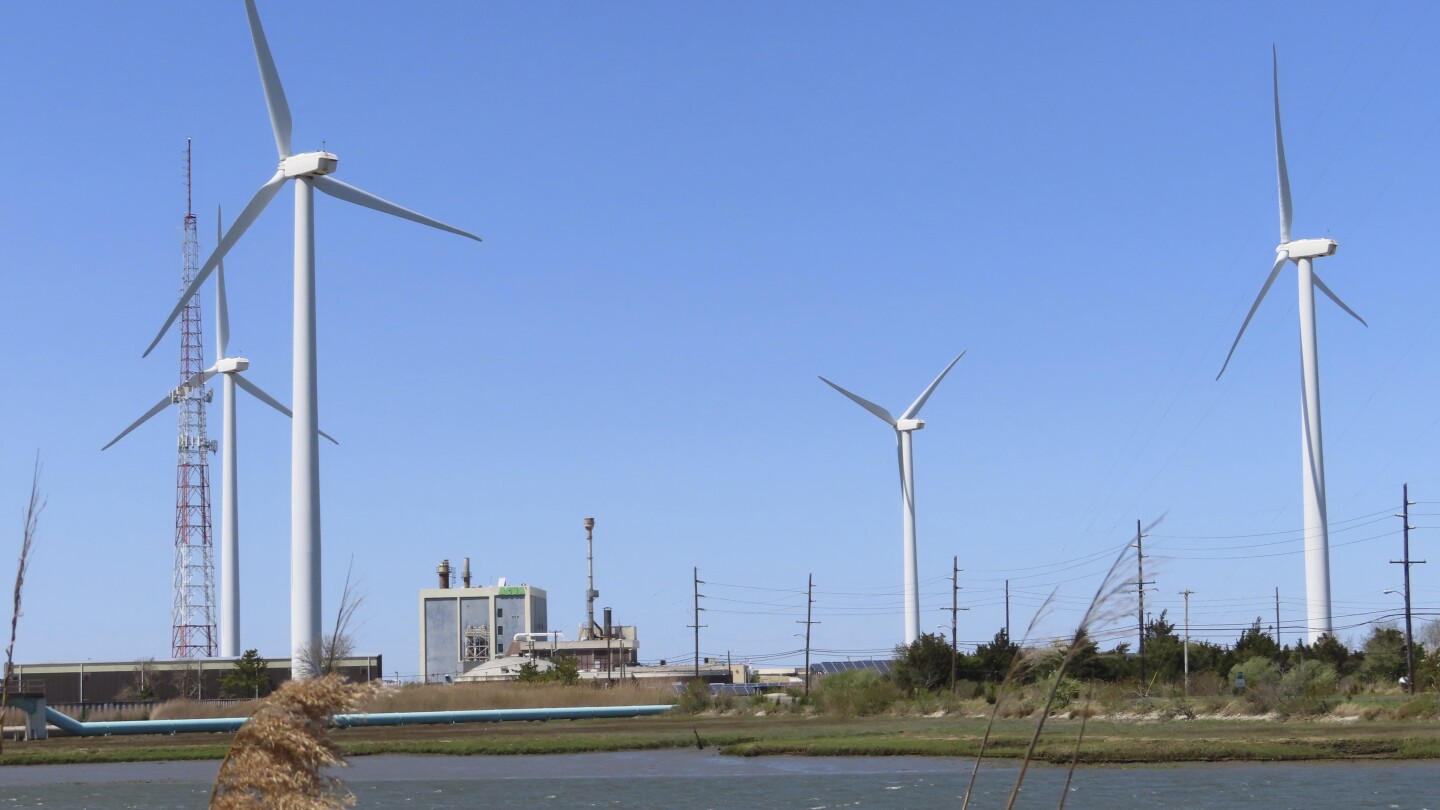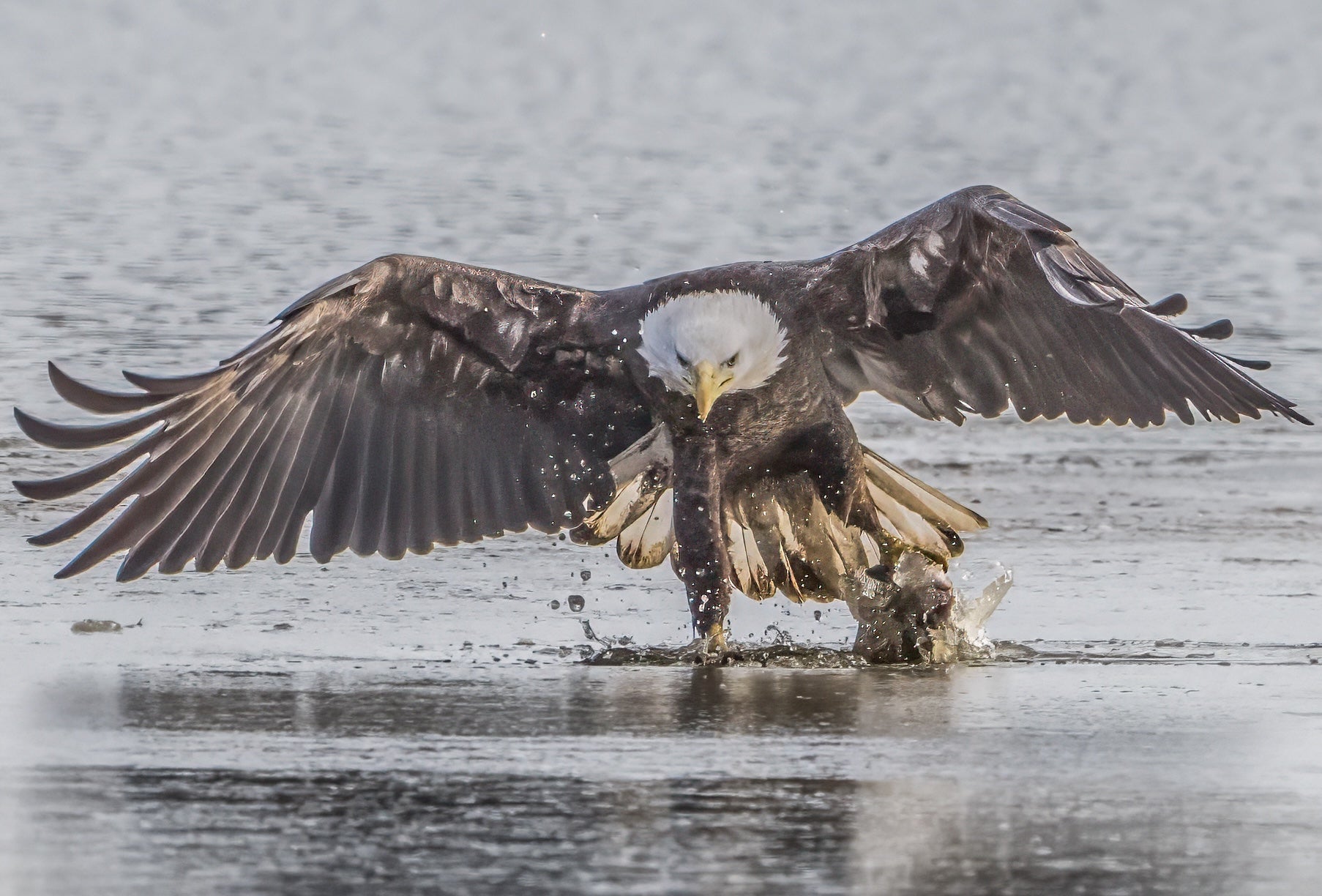New Jersey
US gives go-ahead for Orsted’s New Jersey offshore wind farm to start construction

ATLANTIC CITY, N.J. (AP) — The federal government gave the go-ahead Wednesday for New Jersey’s first offshore wind farm to begin construction, clearing the way for the first of at least three — and likely many more — such projects in a state trying to become the East Coast leader in wind energy.
The U.S. Bureau of Ocean Energy Management approved a construction and operations plan for Ocean Wind I, a wind farm to be built by Danish wind energy company Orsted between 13 and 15 miles off the coast of Atlantic City. The wind farm would power 500,000 homes.
Additional approvals from the Bureau of Ocean Energy Management, the U.S. Army Corps of Engineers, the National Marine Fisheries Service, and the U.S. Environmental Protection Agency still must be obtained, which Orsted estimates will happen by the second quarter of 2024.
A company planning a wind farm off the coast of New Jersey says it wants government financial incentives like the tax break lawmakers are giving a Danish developer.
The CEO of United Airlines is apologizing for jumping on a private plane this week while thousands of his airline’s customers were stranded because their flights got canceled.
A bill to extend internet gambling in New Jersey for another five years is in the hands of Gov. Phil Murphy following its approval by the state Legislature.
A bill to let Danish offshore wind energy developer Orsted keep tax credits that it otherwise would have to return to New Jersey ratepayers was approved by the slimmest of margins in the state Legislature Friday afternoon.
The project already has all of the major state permits it needs, said Larry Hajna, a spokesman for the New Jersey Department of Environmental Protection. Two minor state permits remain outstanding.
The Bureau of Ocean Energy Management’s action represents the third federal approval of a commercial-scale offshore wind energy project in the U.S., joining the Vineyard Wind project in Massachusetts and the South Fork Wind project in Rhode Island and New York, both of which are now under construction.
Orsted said it plans to begin construction in New Jersey this fall, “delivering on the promise of good-paying jobs, local investment and clean energy,” said David Hardy, the company’s CEO for the Americas.
“Since day one, the Biden-Harris administration has worked to jump-start the offshore wind industry across the country, and today’s approval for the Ocean Wind I project is another milestone in our efforts to create good-paying union jobs while combating climate change and powering our nation,” said U.S. Interior Secretary Deb Haaland.
New Jersey Gov. Phil Murphy, a Democrat, called the federal approval “a pivotal inflection point not just for Orsted, but for New Jersey’s nation-leading offshore wind industry as a whole.”
The Bureau of Ocean Energy Management said Orsted will compensate fishing businesses for lost revenues and reimburse them for lost or damaged gear. The company also will create a navigational safety fund for equipment upgrades, the bureau said.
The project would place nearly 100 wind turbines off the coast of southern New Jersey, where they would be visible from the tourist havens of Atlantic City and Ocean City.
That has generated fierce opposition from community groups, most of whom also blame site preparation work for a spate of whale deaths since December. At least 60 whales have died on the U.S. East Coast since then. But three federal and one state agency all say there is no evidence linking the deaths with offshore wind preparations.
At the request of elected officials who want a moratorium on offshore wind projects, the U.S. Government Accountability Office said last month it would “review matters relating to the potential impacts of offshore wind energy development” in the northern Atlantic area between Maine and New Jersey.
Orsted also has approval from New Jersey to build a second wind farm, which has yet to obtain all its approvals. And a third project, Atlantic Shores, also has state approval but still needs federal permission to begin.
Ocean Wind I’s final major approval came just days after the New Jersey Legislature approved a bill last week that would give Orsted a tax break by letting it keep federal tax credits that the company otherwise would have had to pass on to New Jersey ratepayers. The bill is awaiting action by the governor.
The tax break only applies to Ocean Wind I. But on Monday, Atlantic Shore said it, too, wants government financial aid, warning that its project and the jobs it would create are “at risk” without the incentives.
Atlantic Shores is a joint partnership between Shell New Energies US LLC and EDF-RE Offshore Development LLC.
The work that will begin this fall on Ocean Wind I includes laying its electrical transmission cable and building onshore electrical substations. The tall structures that will support wind turbines, called monopiles, are being welded, sandblasted and painted at EEW American Offshore Structures’ facility at the Port of Paulsboro across the Delaware River from Philadelphia International Airport.
Orsted plans to have the monopiles installed in 2024 and to have power flowing from the project to customers by 2025.

New Jersey
New Jersey removes bald eagles from endangered species list as populations soar

This story is part of the WHYY News Climate Desk, bringing you news and solutions for our changing region.
From the Poconos to the Jersey Shore to the mouth of the Delaware Bay, what do you want to know about climate change? What would you like us to cover? Get in touch.
In the early 1980s, New Jersey was on the brink of losing its last remaining bald eagles. Only one nesting pair existed in the state, and their eggs weren’t hatching because of the lingering effects of the insecticide DDT, which was banned in 1972.
Following decades of restoration work, bald eagles now nest in every New Jersey county. This week, the state removed the bald eagle off its endangered species list — more than 17 years after the majestic bird was federally delisted.
“I’ve been around a long time and have not seen very many species delisted. So, it really is a very special thing,” said Kathy Clark, chief of the endangered and nongame species program at New Jersey Fish and Wildlife.
In 2024, New Jersey surveyed a record 293 nesting pairs of bald eagles, of which 264 laid eggs. Their highest numbers are found along the Delaware Bay, where protected marshlands and coastal creeks provide ideal habitats. The state was able to delist the species because their reproductive rate over multiple years reached sustainable levels.
The success story follows years of artificially incubating eggs, introducing eagle chicks from Canada, monitoring nests and educating the public.
“What this really shows is that big picture conservation is possible. It starts with an inspirational spark that causes a wide swath of people to care deeply, and then the work requires learning, effort and perseverance over the long term,” said Alex Ireland, president and CEO of the environmental group New Jersey Audubon. “It’s very important that we think about this proactively as we go forward. It is much better to conserve species before listing is ever required.”
Following the nationwide recovery of the bald eagle, starting in the Chesapeake Bay, the U.S. Fish and Wildlife Service delisted the predatory bird in 2007.
The national ban on DDT, as well as policies aiming to protect birds of prey, played a role in the eagles’ recovery, said Jason Weckstein, an ornithologist at the Academy of Natural Sciences of Drexel University.
“Eagles are an amazing success story. They went from being pretty rare — it was not something that you saw in the suburbs — and now, here in my neighborhood in Wynnewood, I see bald eagles all the time,” he said. “Look up, because there’s a good chance you’ll be able to see an eagle.”
However, several states did not immediately remove bald eagles from their own endangered species lists. For example, Pennsylvania made the move in 2014.
New Jersey
Burlington County, New Jersey, congregation raising historic church to avoid flooding

Doris Priest, a lifelong Burlington County resident, has watched countless landmarks in her community fade into the past.
But there’s one place she prays will endure: her beloved church.
“It’s a small church. It’s just quaint,” said Priest, who is the vice president of the Lumberton Historical Society.
That quaint church is Trinity Episcopal in Vincentown, New Jersey.
It was built in 1871 near the banks of the Rancocas Creek, where it’s stood firm ever since.
However, the growing threats of climate change could soon uproot it.
Priest said each year brings stronger storms and worsening flooding.
“I think it was 2003 we had 5 feet of water in the church,” Priest said. “We get very scared. It was devastating to walk in and everything was gone.”
According to climate risk data from Firststreet.org, more than 37,000 properties in Burlington County are at risk of major flooding over the next 30 years.
That’s why Trinity Episcopal Church is spending hundreds of thousands of dollars to replace and raise the 154-year-old foundation. The plan is to elevate it 4 feet in hopes of preventing future damage.
“In this country, we lose a lot of our history and that upsets me,” Priest said. “We’re trying to save history.”
The church will remain closed during construction, which is expected to be completed by Easter Sunday.
New Jersey
Crime continues to steadily drop in Camden, NJ, according to the data

Officials in Camden County let data back up their claims that crime in the area is at the lowest its been in five decades.
“We had 17 documented murders in 2024. The last time we were that low was in 1985, 40 years ago,” Camden County Police Department Chief Gabriel Rodriguez said.
Back in 2012, the Camden City’s mayor agreed to reform the police department which led to the creation of the Camden County Police Department in 2013.
Since then, commissioners note that crime in all areas have steadily declined.
“We dissolved a failing police department. One that was not serving its community. And constructed and rose up a police department that is now second to none in this nation,” Camden County Commissioner Louis Cappelli explained.
According to the Uniform Crime Report between 2014 and 2024, violent crime is down 50% with homicides, robberies and burglaries down about 72%. Other crime rates, including rape and arson, have also dropped.
Officials say that in addition to restructuring the police department, state and local funding allocated to public safety and educational investments are what helped improve the quality of life in many areas hit by crime.
Some schools were renovated and others were rebuilt. Many of the area parks were beautified and gave the youth safe places to learn and play.
“Our students not only deserve a quality education, but also facilities that make them feel seen, and valued,” Giana Campbell, of the Camden Education Fund, said.
-

 Business1 week ago
Business1 week agoThese are the top 7 issues facing the struggling restaurant industry in 2025
-

 Culture1 week ago
Culture1 week agoThe 25 worst losses in college football history, including Baylor’s 2024 entry at Colorado
-

 Sports1 week ago
Sports1 week agoThe top out-of-contract players available as free transfers: Kimmich, De Bruyne, Van Dijk…
-

 Politics6 days ago
Politics6 days agoNew Orleans attacker had 'remote detonator' for explosives in French Quarter, Biden says
-

 Politics6 days ago
Politics6 days agoCarter's judicial picks reshaped the federal bench across the country
-

 Politics4 days ago
Politics4 days agoWho Are the Recipients of the Presidential Medal of Freedom?
-

 Health3 days ago
Health3 days agoOzempic ‘microdosing’ is the new weight-loss trend: Should you try it?
-

 World1 week ago
World1 week agoIvory Coast says French troops to leave country after decades















